First-principles study on the performance of zigzag graphene nanoribbons for lithium-selenium cathode materials
2021-05-19YANTaoDUANXiangmeiPANRongjianWULuDUShiyu
YAN Tao,DUAN Xiangmei,PAN Rongjian,WU Lu,DU Shiyu
(1.School of Physical Science and Technology,Ningbo University,Ningbo 315211,China;2.Engineering Laboratory for Advanced Energy Materials,Ningbo Institute of Materials Technology and Engineering,Chinese Academy of Sciences,Ningbo 315201,China;3.The First Sub-Institute,Nuclear Power Institute of China,Chengdu 610005,China)
Abstract:The selenium-graphene system showcases the latest development of lithium-ion battery cathode material,which has attracted attention worldwide.By employing the first-principles calculation,we firstly find that both single Se atom and Sen(n=2,3,4,6,8) clusters prefer to stick to the edge site of zigzag graphene nanoribbons (ZGNRs).Besides,the theoretical capacity of Li on Sen@ZGNRs(n=1,2) is investigated comparatively.The Se1@ZGNRs system shows better capacity than that of Se2@ZGNRs.Our findings not only shed light on the adsorption behaviors between Li,Se atoms and ZGNRs theoretically,but also provide a new strategy for improving the performance of Li-Se cathode materials based on the aspect of Se atom number.
Key words:first principles;selenium;zigzag graphene nanoribbon;lithium selenium battery
1 Introduction
Benefiting from the ultrahigh specific area,atoms or molecules modified two-dimensional (2D) graphene has been processed into sorbent materials used in diverse industrial fields,which range from sensors,electronic to catalysis[1-2].Moreover,graphene with a point-like Fermi surface (Dirac Cone) and a linear dispersion at the Fermi level exhibits intriguing ballistic transport properties.Graphene is also widely applied as electrode materials in lithium-ion batteries (LIBs) owing to its high Coulomb efficiency and outstanding electronic behaviors[3-5].
Nowadays,high capacity cathode materials are urgently needed in long life rechargeable LIBs.Selenium cathode has recently attracted great attention since lithium-selenium (Li-Se) batteries have some significant advantages,such as high discharge rate and good cycling performance[6-7].But same to the Lithium Sulfur (Li-S) batteries,the shuttle effect still exists in Li-Se batteries[8].The usage of composite materials for electrode can effectively weaken this shuttle effect.For Li-S batteries,the longer life time benefits from the strong adsorption properties of nanocarbon materials and their role in encapsulating and limiting sulfur[9].Similarly,Li-Se batteries may also show this physical mechanism.Selenium and sulfur have a comparable volumetric capacity,which can also be easily used in portable devices.Moreover,selenium has better electrical conductivity than sulfur,so it has better electrochemical performance and faster electronic conductivity[10].As the electrode,selenium will be a better choice.Sha et al[11]constructed Sen-decorated graphene through a facile high-energy ball-milling process and achieved the higher reversible capacity and better cycle stability.However,the physical and chemical interaction between Se clusters and graphene surface is rarely studied.
In this work,the prior Se atoms adsorption on ZGNRs and the performance of ZGNRs for Li-Se batteries are theoretically studied by first-principles calculation.The results show that both the single selenium atom and selenium atomic clusters are preferred to adsorb on the edges of ZGNRs.The theoretical capacity of lithium atoms adsorption on Sen@ZGNRs is also evaluated.Our results provide a theoretical understanding for the Se@ZGNRs as cathode material in the Li-Se batteries.
2 Computational Methods
The calculations of electronic structures are carried out using the Vienna Ab-initio Simulation Package(VASP) based on density functional theory (DFT)[12-15].The exchange-correlation interaction is treated within the generalized gradient approximation (GGA) in the form of Perdew-Burke-Ernzerhof (PBE)[16-18].The cutoff energy is chosen to be 450 eV for the plane wave expansion.To achieve a balance between efficiency and accuracy,Monkhorst-Pack k-sampling with grid of 1×1×5 and 1×1×15 are used in structural optimization and static self-consistent calculation,respectively.The geometries are fully optimized until the forces on each atom are less than 0.1 eV·nm-1and the energy convergence is less than 1.0×10-5eV.The van der Waals corrections are adopted for the adsorption with the scheme of Grimme DFT-D2 involved in the effect of dispersion relationship,which succeeds in describing interaction between graphene and the surface of SiO2[19].
In this work,the single layer ZGNRs with the width of 10 carbon atoms in both armchair and zigzag direction is adopted as the initial supercell model,and Se and its clusters are adsorbed on the surface.This width will not be too large to show the graphene characteristics instead of ZGNRs,nor is it too small to show unreliable edge effects[20].2 nm vacuum between edge-to-edge and layer-to-layer are added to eliminate the coupling between adjacent nanoribbons,while the crystal structure has periodicity in thez(zigzag) direction.In order to prevent the chemical reactivity between dangling bonds,the nanoribbon edges are passivated with hydrogen atoms.The adsorption energy (Eads) of the Senclusters on the surface of ZGNRs is defined as

3 Results and Discussions
3.1 Single Se adsorption on ZGNRs
In this work,calculations are started with adsorption of a single selenium atom on ZGNRs.As shown in Fig.1,the 1~8 and 1’~8’ adsorption positions,including hole,bridge,and top sites along armchair direction,are considered to study the relative stability.The distance between two adjacent numbers is equal inydirection.We find that the energy at the edge site is smallest,which indicates indirectly that it is more stable at the edge,shown in Table 1.The same phenomenon is found in other studies[21-22].There is small fluctuation of energy near the middle of zigzag graphene nanoribbon,which is reasonable due to pseudo-periodicity at the center area of the nanoribbon.

Fig.1 The 1~8 and 1’~8’ adsorption positions on ZGNRs
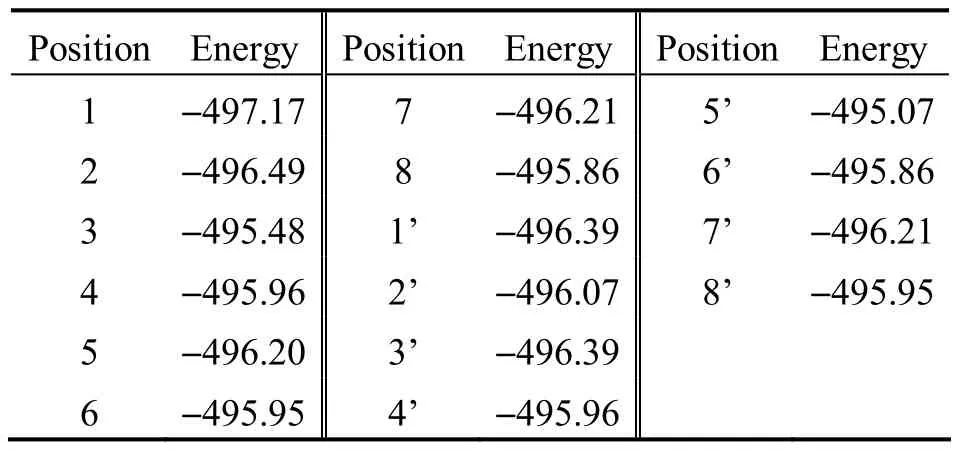
Table 1 Energy of the 1~8 and 1’~8’ adsorption positions on ZGNRs eV
To further confirm that the edge site is the preferred location for Se adsorption,three different sites of Se adatom near the edge are taken into calculation again.As shown in Fig.2(a),the bridge site refers to the midpoint position between two nearest-neighbor carbon atoms,the hollow site indicates the center of a carbon ring,and the top site represents the top of one carbon atom.After optimization,the selenium atom moves from the above considered three sites to the site between carbon and hydrogen atom near edge,as shown in Fig.2(b).The adsorption energy is -1.78 eV and the distance between Se and the nearest carbon atom is 0.201 nm.Thus,we are able to reconfirm that the edge site is the most energetically favorable,meaning that single selenium atom is more likely to occupy the edge position.
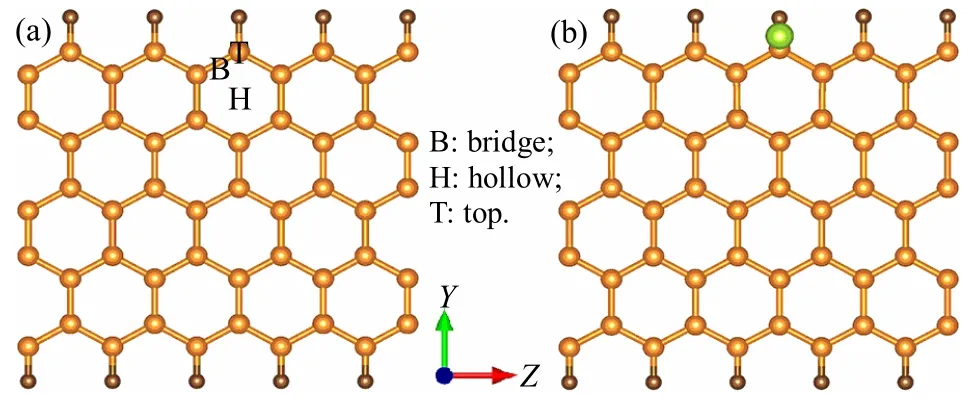
Fig.2 Three high symmetry adsorption positions (a) and fully relaxed configuration of one Se adsorption on ZGNRs (b)
3.2 Se clusters adsorption on ZGNRs
The structures of selenium clusters on ZNGRs are then investigated.Eight cluster structures shown in Fig.3,including Se2,C2vand D3hstructures of Se3,C2vand C2hstructures of Se4,C2vand D3dstructures of Se6,and D4dstructure of Se8,are selected as adsorption models,which are comparable to the possible structures of Se3,Se4,Se5,Se6,Se7and Se8calculated by Hohl et al[23]and Li et al[24].In this work,the bond length and energy of selenium dimer are 0.220 nm and -5.29 eV,respectively.The bond length is in good agreement with the experimental results of 0.217 nm[24-25].Se3includes nearly degenerate (D3h) and open (C2v) structures.The bond lengths are 0.223 and 0.238 nm in C2vand D3hstructures,respectively.The C2vstructure shows a slightly lower energy (-9.16 eV) than the D3hstructure(-9.06 eV).Se4has open (C2v) and zigzag (C2h)structures.The energy of C2v(-12.96 eV) is again lower than C2hstructure (-12.62 eV).As for Se6,it has the symmetrical structures of C2vand D3dwith D3dshowing higher stability (-20.71 eV) than C2v(-20.31 eV).The D4dstructure of Se8,showing a bond length of 0.235 nm and angle of 109°,is well consistent with the experimental data[26]and Hohl’s data[23].All data and structural models are presented in Fig.3 and Table 2.

Fig.3 Optimized structure of selenium clusters
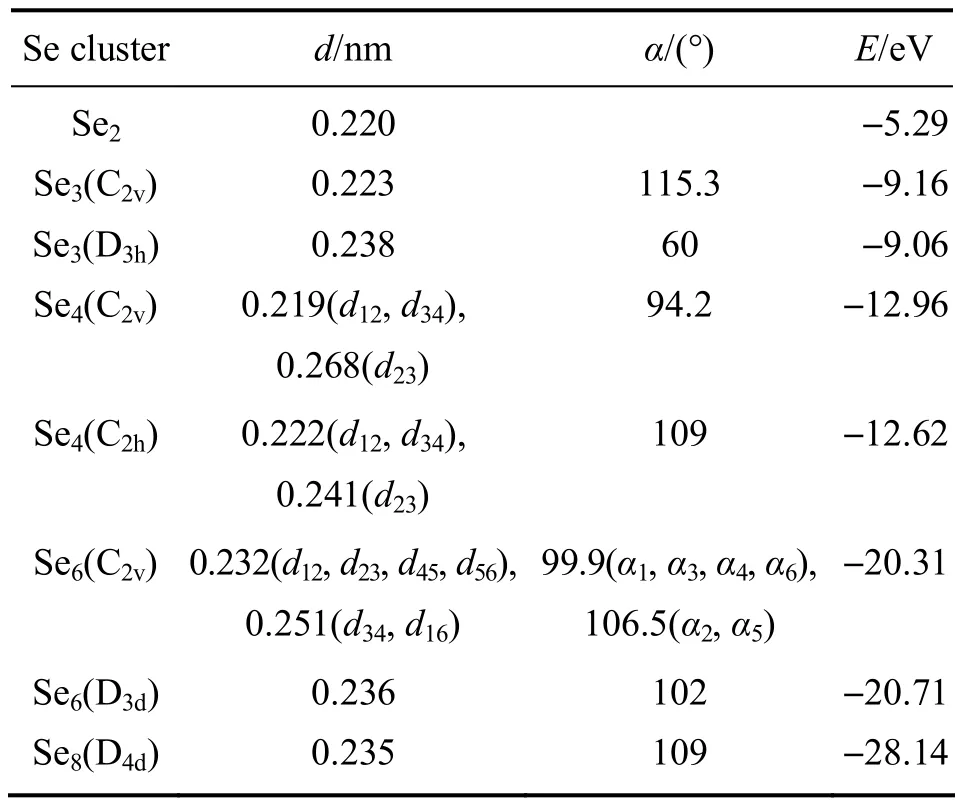
Table 2 Bond length d,bond angles α and total energy E of Se clusters
The difference between ours and Hohl’s work lies in the C2vstructure of Se4.The structure is built according to Hohl’s parameters and the optimization leads to an angle of only 94.2°,which is same as Pan’s data[27],while the angle of the Hohl’s data is 102°.Here we choose to use the C2vstructure of Se4obtained from our calculations.By comparing energy values of Se clusters,the most stable structures include Se2,C2vstructure for Se3,C2vstructure for Se4,D3dstructure for Se6,and D4hstructure for Se8.
After that,the above-mentioned stable structures of selenium clusters are placed at three highly symmetric point shown in Fig.2(a) on the surface of ZGNRs.Generally,there are two adsorption forms of clusters on ZGNRs.The first form is parallel to ZGNRs,called“sleep-mode”,and the second form is perpendicular to ZGNRs,named as“stand-mode”.In both modes,geometric centers of selenium clusters are regarded as a point tentatively adsorbed on three different positions of edge sites.Thus,30 types of adsorption structures are built as initial guesses.After full relaxation,five most stable structures are obtained,as shown in Fig.4.
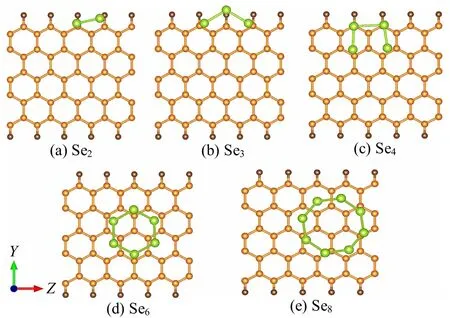
Fig.4 The most stable structures of Sen adsorbed on pristine ZGNRs
To better understand the changes before and after adsorption,the comparisons of structure parameters,including bond length between selenium (dSe-Se),nearest distance between selenium and carbon (dSe-C) and the angle of C-Se-C (θC-Se-C),are listed in Table 3.Forn<4 in Sen@ZGNRs system,the small distance between Se and nearest C may confirm that the two types of atom may form covalent bond.However,Sen(n≥4) clusters bind weakly with the ZGNRs by van der Waals forces,which may be related to lower adsorption energy.As to the energy,the adsorption energies show decrease tendency with cluster size increasing.

Table 3 Initial site including cluster form and structure parameters of Sen on ZGNRs
To further understand the interaction between Senclusters and ZGNRs,we compute the distribution of charge by calculating charge density difference.The charge distribution is calculated based on the formula:


Fig.5 The charge redistributions by calculating charge density difference for Sen@ZGNRs in the side and top views
3.3 Theoretical capacity of lithium storage
The theoretical lithium-storage capacity calculations based on a single Se atom and Se dimer on ZGNRs are performed.The lithium atom and selenium atom form clusters are denoted as LixSe and LixSe2.The selenium atom is adsorbed on the edges of ZGNRs,which results in selenium atoms with strong edge states,with larger electron density and high activity[29].Moreover,the lithium atom is also more likely adsorbed on the hollow site at the edge of ZGNRs[21,30].Thus,Li atom is initially placed on top of the hollow site or functional group(between a hydrogen atom and a near-neighbor hydrogen atom) around the selenium atom at the edge site.The theoretical capacity is determined by calculating its lithiation voltages with respect to the potential of Li/Li+at various stages of lithiation using the following formula[30]:

Fig.6 shows optimized structure of LixSe clusters adsorbed on ZGNRs,as expected,the adsorption of Li atom occurs at the edge of ZGNRs.In Fig.6(a),one single Li atom strongly prefers to occupy the hollow site at the edge of ZNGRs,similar to graphene[31]and ZGNRs[21,30].

Fig.6 Optimized structures of LixSe adsorbed on ZGNRs
The binding energy is obtained by:

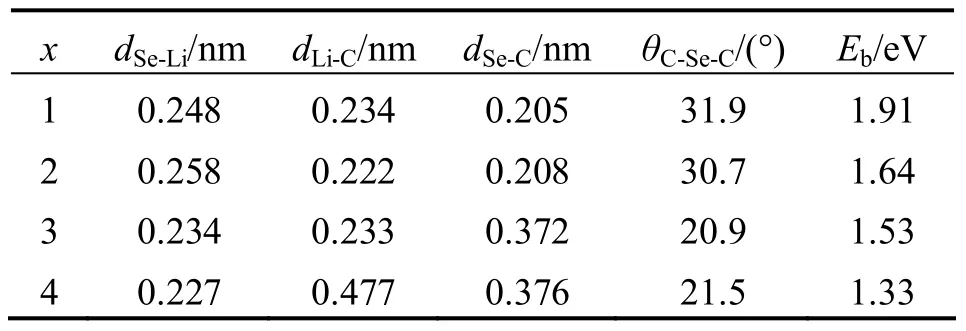
Table 4 Structural parameters of LixSe adsorbed on ZGNRs
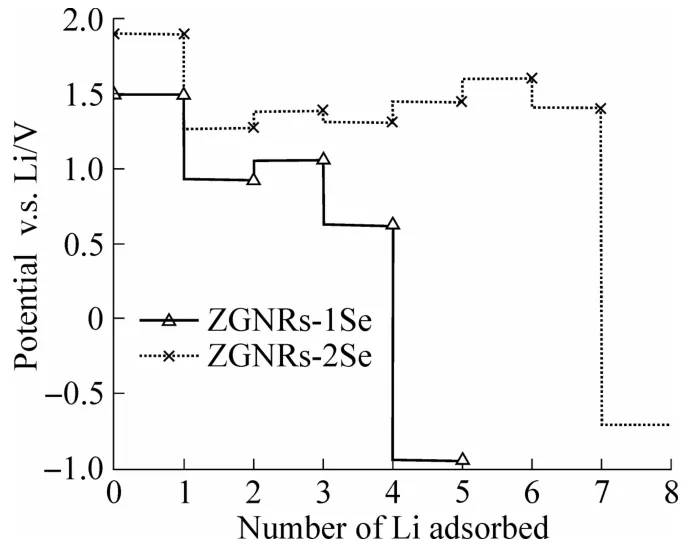
Fig.7 The calculated lithiation potential of Se1/Se2@ZGNRs
We further calculate the lithium capacity of Se2@ZGNRs system.The optimized structures of Lixon Se2@ZGNRs are shown in Fig.8.Meanwhile,the relevant parameters are also listed in the Table 5.Compared to the case of Se@ZGNRs,the theoretical capacity of Li becomes bigger after adding one selenium atom,the value is 7,as shown in dotted line in Fig.7.As the number of Li atoms increases,the distance becomes larger and the interaction becomes smaller between the two selenium atoms,corresponding to dissociation of the dimer into single Se atoms when interacting with surrounding Li atoms.This phenomenon implies that LixSe2is not as stable as LixSe adsorbed on ZGNRs.Therefore,better capacity in electrodes may be obtained in the single Se-graphene systems.These results may provide new clues for improving the performance of Li-Se batteries.
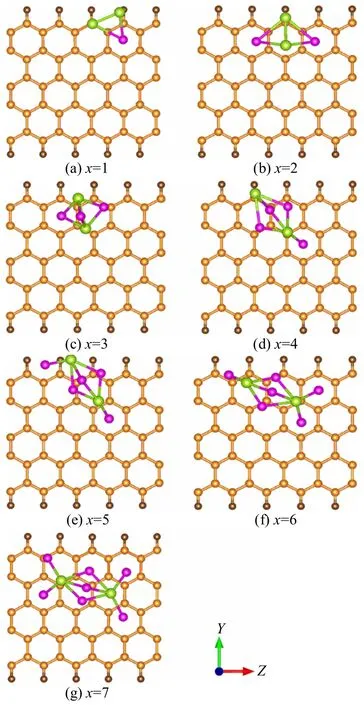
Fig.8 Optimized structures of Lix on Se2@ZGNRs
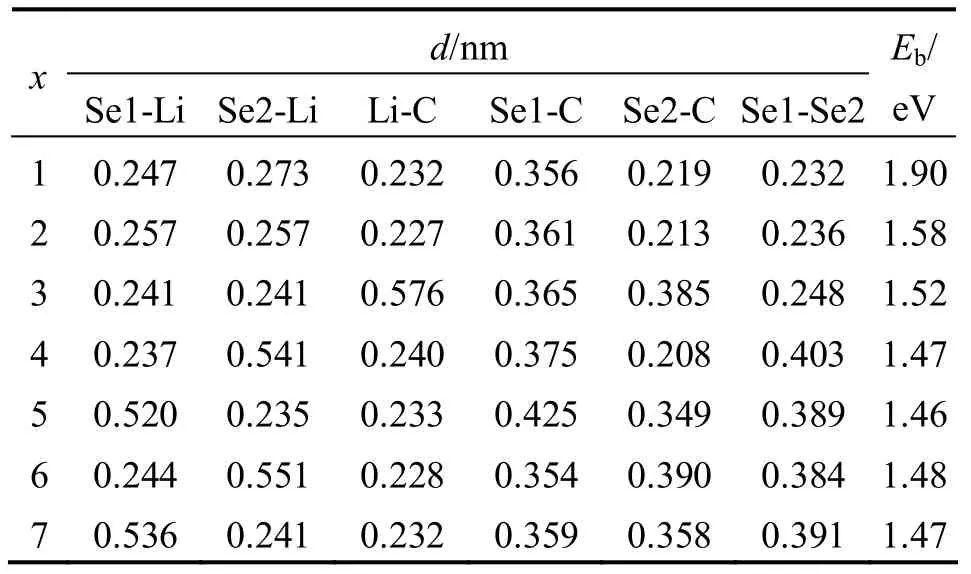
Table 5 The structural parameters of Lix on Se2@ZGNRs
4 Conclusion
In summary,the structures of selenium and selenium clusters absorbed on zigzag graphene nanoribbons are studied and the atomic lithium capacities of Se1/Se2@ZGRNs are explored by DFT computation.The results show that a single selenium atom is more easily adsorbed on the edge of ZGNRs,i.e.,the C-H bridge site.The selenium atom in Sen(n<4) clusters are covalently bonded with ZGNRs,while the interaction between Sen(n≥4) and ZGNRs is mainly stabilized by the van der Waals force.It is also found the insertion of lithium may increase the distance between selenium atom and ZGNRs.The LixSe and LixSe2clusters adsorbed on ZGNRs show maximum capacity values of 4 and 7,respectively.As the number of Li atoms increases,the interaction between selenium atoms decreases and atomized Se may bring higher capacity than clustered Se in ZGNRs.Our results may provide new clue on the performance improvement of the selenium-ZGNRs as cathode material in lithiumselenium battery.
